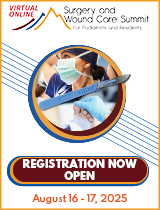





|

|
|
|

|
Search
03/27/2025
RESPONSES/COMMENTS (PM JURY VERDICT REPORTER) - PART 1B
From: Fred Ferlic, MD
Fred Ferlic, MD, South Bend, IN
Other messages in this thread:
04/04/2025
RESPONSES/COMMENTS (PM JURY VERDICT REPORTER) - PART 1B
From: Paul Kesselman DPM
Drs. Roth, Borreggine, and others have all brought up some very interesting points. The Standard of Care (SOC) for anticoagulation according to the literature appears dependent on the specific pathology. It appears prophylaxis anticoagulation and post-operative medication orders for the various anticoagulants on the market may be different for patients who have had a previous PE or DVT is different than for that of a patient who has a bovine cardiac valve.
Things have changed dramatically since I took pharmacology in the 1970s when just ASA, coumadin, and heparin were available. Certainly, our responsibility as the lower extremity surgeon is to obtain this as part of the patient's history and have the appropriate medical specialists order and manage these issues in all aspects of surgical care, both pre-, intra-, and post-operatively. This is also consistent with what my orthopedic colleague Dr. Ferlic posted here a few days ago. Certainly, in sharing information, we can't be castigated for sharing the wealth.
Paul Kesselman, Oceanside, NY
03/07/2025
RESPONSES/COMMENTS (PM JURY VERDICT REPORTER) - PART 1B
From: Aaron Solomon, DPM
The Evans calcaneal osteotomy is a procedure that I have utilized throughout my career. I was told early in my residency training that the Evans is an extremely powerful osteotomy as it can provide triplane correction to an unstable flatfoot. I am not saying anything that those reading this do not already know, and this is not meant to be a treatise on the Evans calcaneal osteotomy. We all know when done correctly this osteotomy greatly helps those with a painful unstable flatfoot.
In my practice, the majority of the people receiving this osteotomy are those who suffer from posterior tibial tendon dysfunction, and it is done in concert with other procedures. Once again, I am not saying anything that my colleagues do not already know. What I and perhaps many of us do not know are the details of the osteotomy performed in the aforementioned litigation. Were the ligaments of the calcaneocuboid joint compromised? Was the long plantar ligament...
Editor's note: Dr. Solomon's extended-length letter can be read here.
02/18/2014
RESPONSES/COMMENTS (PM JURY VERDICT REPORTER) - PART 1B
From: Bryan C. Markinson, DPM, Alison D. Silhanek, DPM
An interpretation of the merits or lack of merit of a negligence case, or the ethical nature of any expert in such cases, SOLELY based on the snapshots reported in PM News is outrageous.
From what I have seen, Dr. Udell indeed is correct that gross negligence occurs, but it is rare. The gross negligence cases suggested by Dr. Udell are few and far between. Let us be honest here. Some podiatry school faculty are taking plaintiff's expert positions to pad their retirement accounts. It is morally bankrupt, our schools have done nothing to regulate it, and it needs to stop. And the only way to stop it is with repeated reminders to them that they are supporting morally bankrupt processes. If there was any way I could influence prospective students from those colleges which engage in this, I would. I hate to think that I am chasing at windmills here, but plaintiff and personal injury attorneys are part of what is wrong in the U.S., and I cannot help myself but try to fight the good fight.
02/17/2014
RESPONSES/COMMENTS (PM JURY VERDICT REPORTER) - PART 1B
From: Elliot Udell, DPM
Dr. Silhankek raises an age-old complaint that many of us have against physicians ready and willing to testify against their colleagues in medical malpractice cases. As he pointed out in this most recent case, the plaintiff's experts are esteemed faculty members of a podiatric medical college. You can bet that their credentials were used in court to give credence to the plaintiff's case.
There are, however, two sides to this discussion. On one hand, it is troubling when a respected colleague testifies against one of his or her peers in an effort to bolster a frivolous lawsuit. On the other hand, there are some very bad mistakes that occur daily in both doctors' offices and in hospitals. Patients who suffer harm, as a result of blatant medical negligence, deserve their day in court and are entitled to expert representation.
12/03/2013
RESPONSES/COMMENTS (PM JURY VERDICT REPORTER) - PART 1B
From: Alison D. Silhanek, DPM
Am I the only person reading this post to realize that Dr. Steven Boc, the plaintiff’s witness, was an employee of the Temple University School of Podiatric Medicine? A supposed dedicated employee of one of our schools, who was molding our future podiatrists, is testifying against his colleagues? A paid gun working against us? How can our schools allow their affiliated doctors to act against other members of our profession? Shame on you, Dr. Boc. And shame on the Temple school for ignoring his opportunism at the expense of his colleagues. We as a profession need to stop being ashamed of our malpractice cases, as ridiculous as they may be, and start exposing the miscreants who try to discredit us.
Editor's note: Dr. Boc has not been affiliated with TUSPM for many years. Most podiatry school faculty testify only as defendants' witnesses. There have been, of course, rare exceptions .
|
| |

|
|
|







